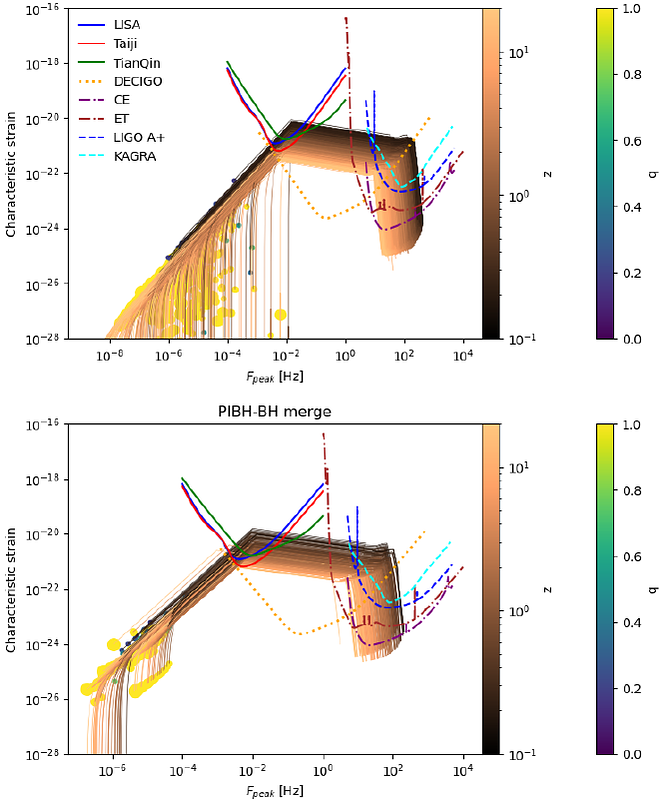Pair-Instability Gap Black Holes in Population III Star Clusters: Pathways, Dynamics, and Gravitational Wave Implications

Pair-Instability Gap Black Holes in Population III Star Clusters: Pathways, Dynamics, and Gravitational Wave Implications
Weiwei Wu, Long Wang, Shuai Liu, Yining Sun, Ataru Tanikawa, Michiko Fujii
AbstractThe detection of the gravitational wave (GW) event GW190521 raises questions about the formation of black holes within the pair-instability mass gap (PIBHs). We propose that Population III (Pop III) star clusters significantly contribute to events similar to GW190521. We perform $N$-body simulations and find that PIBHs can form from stellar collisions or binary black hole (BBH) mergers, with the latter accounting for 90\% of the contributions. Due to GW recoil during BBH mergers, approximately 10-50% of PIBHs formed via BBH mergers escape from clusters, depending on black hole spins and cluster escape velocities. The remaining PIBHs can participate in secondary and multiple BBH formation events, contributing to GW events. Assuming Pop III stars form in massive clusters (initially 100,000 $M_\odot$) with a top-heavy initial mass function, the average merger rates for GW events involving PIBHs with 0% and 100% primordial binaries are $0.005$ and $0.017$ $\text{yr}^{-1} \text{Gpc}^{-3}$, respectively, with maximum values of $0.030$ and $0.106$ $\text{yr}^{-1} \text{Gpc}^{-3}$. If Pop III stars form in low-mass clusters (initial mass of $1000M_\odot$ and $10000 M_\odot$), the merger rate is comparable with a 100% primordial binary fraction but significantly lower without primordial binaries. We also calculate the characteristic strains of the GW events in our simulations and find that about 43.4% (LISA) 97.8% (Taiji) and 66.4% (Tianqin) of these events could potentially be detected by space-borne detectors, including LISA, Taiji, and TianQin. The next-generation GW detectors such as DECIGO, ET, and CE can nearly cover all these signals.